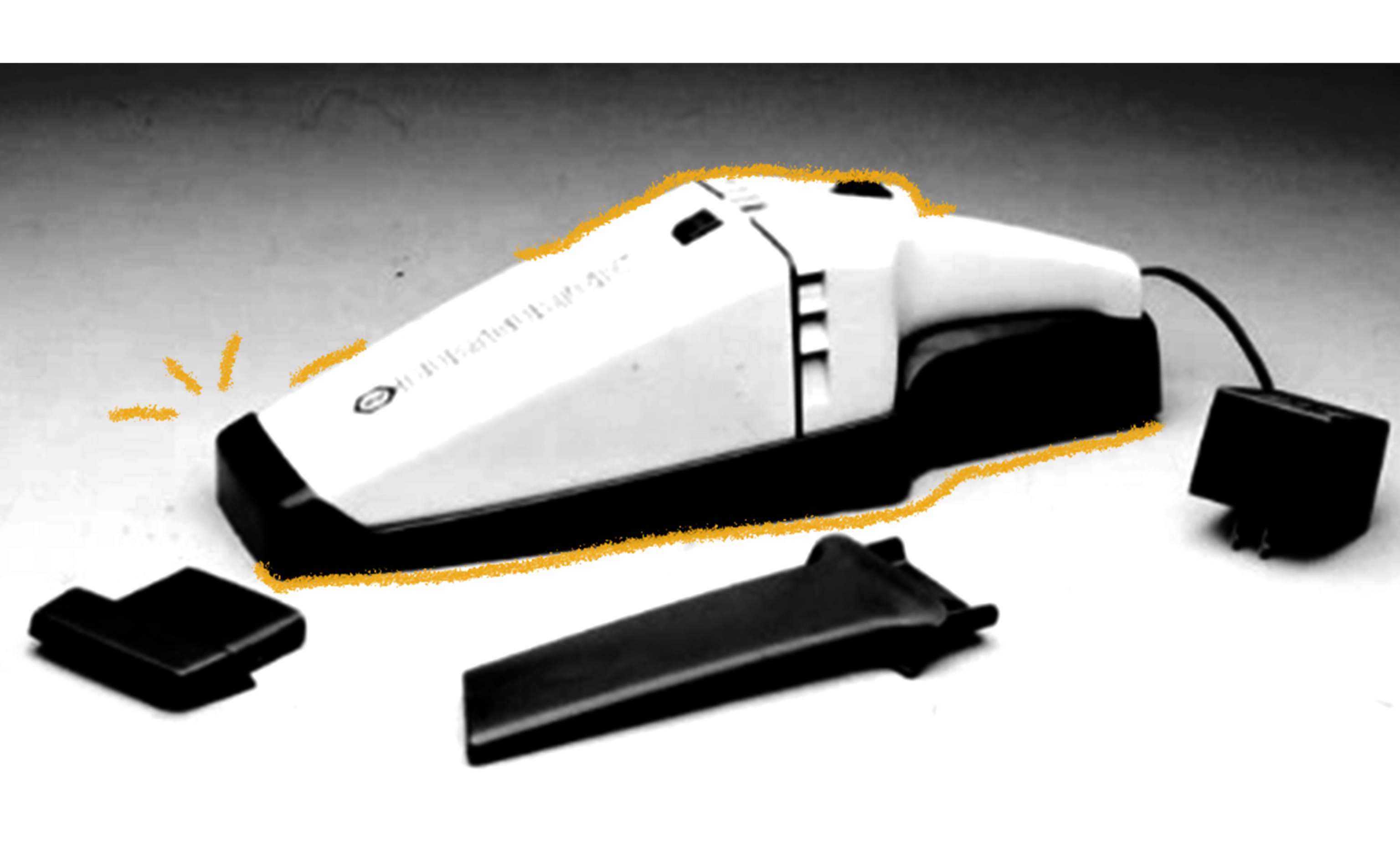The Dustbuster got its start during the space race. In the early 1960s, NASA awarded Black & Decker the contract to develop a cordless, rechargeable drill for extracting core samples from the Moon. The company created the Moon Drill for NASA, but also sought to utilize their findings to develop new consumer products. One of these products was 1974’s Mod 4 Power Handle Cordless System, which was essentially a multi-tool that could be used as a drill or a shrub trimmer. More significantly, it also included a small “Spot-Vac” vacuum cleaner. The Mod 4 was not successful among its male target demographic, but Black & Decker soon learned that women often used the Spot-Vac component of the Mod 4 to clean up small kitchen messes. In response, the company’s design chief Carroll Gantz and his team created a reworked prototype that featured a neutral beige color scheme and a triangular body styled after dustpans. Following a few tweaks and a company-wide naming contest, the Dustbuster was born! Gantz urged Black & Decker to file their first-ever design patent to protect the cordless, rechargeable, hand-held vacuum cleaner, which they did. And when the Dustbuster debuted in 1979, it created a whole new category of vacuum cleaner. The Dustbuster was highly successful and went through a few major redesigns, including one in 1986 as well as one in the 1990s and one in the 2000s. By some estimates, over 150 million Dustbusters have been sold since the device debuted in 1979, and the small, cordless vacuum cleaners continue to be popular today.

Your go-to guide for weird history facts
Subscribe to the FREE daily email that makes learning about history fun.


